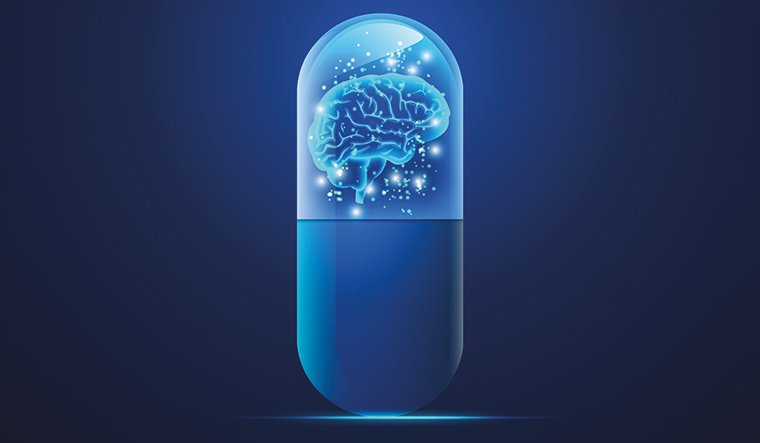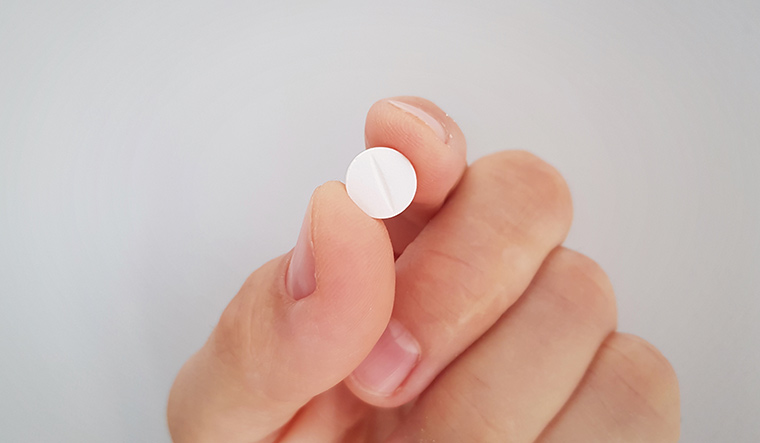Regular consumption of certain foods can lower your risk of cardiovascular diseases, such as heart attack and stroke, and premature death. For the global study published in the European Heart Journal, Canadian researchers analysed data from multiple studies that included 2,45,000 people in 80 countries.
The researchers created a new diet score (PURE Healthy Diet Score) to analyse the health impact of six foods—fruits, vegetables, legumes, nuts, fish, and whole-fat dairy products—each of which has been linked with longevity. The PURE diet recommends two to three daily servings of fruit; two to three daily servings of vegetables; one daily serving of nuts; two daily servings of whole fat dairy products; three to four weekly servings of legumes; and two to three weekly servings of fish. Moderate amounts of whole grains and unprocessed meats could also be included.
During an average follow-up of 9.3 years, the healthiest diet (score of 5 or more) was linked with a 30 per cent lower risk of death, 18 per cent lower risk of cardiovascular disease, 14 per cent lower risk of heart attack, and 19 per cent lower risk of stroke compared with the least healthy diet (score of 1 or less).
“The connection between the PURE diet and health outcomes was found in generally healthy people, patients with CVD, patients with diabetes, and across economies. The associations were strongest in areas with the poorest quality diet, including South Asia, China and Africa, where calorie intake was low and dominated by refined carbohydrates. This suggests that a large proportion of deaths and CVD in adults around the world may be due to undernutrition, that is, low intakes of energy and protective foods, rather than overnutrition,”said Professor Salim Yusuf, principal investigator of PURE.
Breast cancer survivors can safely pause treatment to have a baby

PAUSING ENDOCRINE THERAPY to have a baby does not increase the risk of cancer recurrence for breast cancer survivors, according to a US study published in the New England Journal of Medicine.
The standard treatment for women with early-stage hormone receptor positive breast cancer involves five to 10 years of endocrine therapy that blocks oestrogen activity and reduces the odds of recurrence. Women are advised not to get pregnant while taking these medications and for young women this could encompass their childbearing years.
To analyse pregnancy outcomes and safety of temporarily halting endocrine therapy to pursue pregnancy, the researchers recruited 516 breast cancer patients aged 42 or younger from 116 centres across 20 countries on four continents. The women had been diagnosed with early-stage breast cancer and had completed between 18 and 30 months of endocrine therapy following surgery for breast cancer. The women could stop hormone therapy for up to two years to try to get pregnant, after which they were advised to restart the therapy.
Overall, 368 (74 per cent) had at least one pregnancy, and 317 (63.8 per cent) had at least one baby. A total of 365 babies were born and 43 per cent of the women used assisted reproduction because they had frozen their eggs, or embryos, before cancer treatment to preserve their fertility.
The rates of conception and childbirth were similar or higher than rates in the general population. Also, the babies did not have an increased risk of birth defects. Over three years of follow up, 8.9 per cent of patients had a breast cancer recurrence which is similar to the 9.2 per cent rate seen in a different group of breast cancer patients who had not paused their endocrine therapy.
The younger a person gets diabetes the higher the dementia risk

THE YOUNGER YOU develop type 2 diabetes, the higher your risk of dementia, according to a US study published in the journal Diabetologia. Prediabetes, a condition where blood sugar is higher than normal but not high enough to be defined as diabetes, often precedes diabetes. About 70 per cent of people with prediabetes will eventually develop type 2 diabetes. The age at which this transition happens may impact a person’s risk of dementia.
The study included 11,656 people, average age 56.8 years, who did not have diabetes at the start of the study. But 20 per cent of them had prediabetes. Their cognitive abilities were assessed for nearly three decades. Those who progressed from prediabetes to type 2 diabetes before age 60 were three times more likely to develop dementia. This increased risk dropped to 73 per cent for those who developed diabetes between the ages of 60 to 69 years and fell further to 23 per cent for those who developed diabetes between the ages of 70 to 79 years. Developing diabetes at age 80 and beyond was not associated with an increased risk of dementia.
Did You Know?
Fruits such as apples and blackberries that contain a particular flavanol called quercetin could lower your chances of developing frailty as you age.
The American Journal of Clinical Nutrition
Statin alternative lowers cholesterol, heart disease risk

A NEW DRUG could provide an alternative for people with high LDL cholesterol who cannot tolerate statins. According to a study published in the Journal of the American Medical Association, bempedoic acid, a new statin alternative cholesterol-lowering drug, was effective in reducing LDL cholesterol and significantly reducing the risk of major adverse cardiovascular events such as heart attacks and strokes as well as death from heart diseases.
Statins are recommended for people with high cholesterol who are at an increased of heart attack and stroke. However, some patients cannot take them due to adverse side effects, especially muscle pain or weakness. An earlier analysis of the study, which included 13,970 statin-intolerant patients, showed that bempedoic acid lowered LDL cholesterol levels on average by 21 per cent and reduced cardiovascular events, including heart attack, stroke, and procedures to open blocked blood vessels to the heart, by 13 per cent.
The current analysis focused on 4,206 patients with high risk for heart disease, like diabetes, but had not yet had a cardiovascular event.
During a median follow up of 39.9 months, bempedoic acid reduced LDL cholesterol by 21.3 per cent; inflammation measured by C-reactive protein by 21.5 per cent; major cardiovascular events by 30 per cent; heart attacks and death from heart disease by 39 per cent; and all-cause mortality by 27 per cent compared with a placebo.
Adverse effects with bempedoic acid included a higher incidence of gout and gallstones.
Did You Know?
College students who limited their social media usage to 30 minutes a day for two weeks scored significantly lower for depression, anxiety, loneliness and fear of missing out, and had a brighter outlook on life compared with a control group that did not limit their social media usage.
Technology, Mind, and Behavior
Kids who read for pleasure will have sound minds in adolescence

CHILDREN WHO START READING for pleasure early in childhood tend to perform better on cognitive tests and have fewer behavioural and mental problems in adolescence. The optimal amount of reading? 12 hours a week.
For the study published in Psychological Medicine, the researchers focused on 10,243 kids, aged 9 to 13. Parents answered questions about their children’s reading habits. About half the children were early readers. They had started reading somewhere between three and ten years. The remaining either did not read for pleasure or started reading much later in childhood.
Early readers scored higher on cognitive tests that measured verbal learning, memory, and speech development, as well as academically. They also had better mental and emotional wellbeing: showing fewer signs of stress and depression, as well as improved attention, and had fewer behavioural problems, like aggression and rule breaking. They spent less time watching TV or using their smartphones or tablets and also got more sleep.
Brain scans of early readers showed moderately larger total brain areas and volumes, especially in brain regions that are crucial for cognitive function. Brain regions related to improved mental health, behaviour and attention were also different in that group.
Are gas stoves safe?

ACCORDING TO A STANFORD UNIVERSITY study published in the journal Environmental Science & Technology, cooking with gas stoves can increase indoor levels of cancer-causing chemical benzene that has been linked to a higher risk of leukaemia and other blood cell cancers. The researchers tested gas and propane stoves and ovens in 87 homes.
A single gas stove burner on high or a gas oven set to 350 degrees Fahrenheit can increase indoor levels of benzene above those seen with secondhand tobacco smoke. Benzene can drift to other rooms in the house far from the kitchen and linger for hours in the air. Concentrations of benzene measured in bedrooms far exceeded national and international health benchmarks for hours after the stove was turned off.
However, the food being cooked did not emit benzene. All benzene emissions came from the fuel used. Gas and propane burners and ovens emitted 10 to 25 times more benzene than electric stoves. Induction cooktops did not emit any detectable benzene.
The study also found that exhaust fans were often ineffective at reducing concentrations of benzene and other pollutants.
Gas stoves can also expose users to pollutants, such as nitrogen dioxide, which can trigger respiratory diseases. A previous study showed that children who live in homes with gas stoves have a 42 per cent greater risk of asthma than children living in homes without gas stoves. Proper ventilation with a range hood or open window can reduce pollutant concentrations when cooking with a gas stove.
Did You Know?
Oral contraceptive usage in adolescence was linked to a 130 per cent greater risk of depression, while adult users had 92 per cent greater risk, during the first two years of use.
Epidemiology and Psychiatric Sciences
Once a week insulin vs daily injections for type 2 diabetes

A WEEKLY INSULIN DOSE may be significantly better at helping people with type 2 diabetes manage their blood sugar levels, according to two new studies.
One study published in The New England Journal of Medicine compared once-weekly icodec, a basal insulin, to once-daily insulin glargine U100. The 78-week phase 3a trial included 984 people with type 2 diabetes who were randomly assigned to receive one of the two treatments. The participants’HbA1c was between 7 to11 per cent at the start of the study and none of them had previously received insulin. HbA1c is a blood test that measures average blood sugar levels over the preceding three months. An HbA1c of 6.5 per cent or above indicates diabetes.
At the end of the study period, those on the weekly regimen saw their HbA1c drop from 8.50 per cent to 6.93 per cent, while those on the daily regimen saw a drop from 8.44 per cent to 7.12 per cent. The difference of percentage points between the two groups confirmed the superiority of icodec.
The percentage of time spent with blood glucose levels in the target range was significantly higher with icodec than with glargine U100. While the rates of hypoglycemia were higher in the icodec group, other adverse events were similar between the two groups.
The second study published in JAMA compared the efficacy of once-weekly icodec to once-daily insulin degludec in 588 people with type 2 diabetes who had never received insulin. After 26 weeks, HbA1c levels among participants in the icodec group fell from an average of 8.6 per cent to 7 per cent compared to an average drop of 8.5 per cent to 7.2 per cent in the degludec group. As with the previous study, the rates of hypoglycemia were higher in the icodec group.
Social isolation can be fatal

A REVIEW OF 90 STUDIES involving more than 2.2 million people, aged 18 years or older, published in Nature Human Behavior has found that social isolation and loneliness were associated with a higher risk of premature death from all causes, including cancer and heart disease. Social isolation increased the risk of all-cause mortality by 32 per cent, and loneliness increased the risk of death by14 per cent.
Social isolation increased the risk of death from cancer by 24 per cent, and from cardiovascular diseases by 34 per cent, while loneliness increased the risk of cancer mortality by 9 per cent. There was a 28 per cent increased risk of all-cause mortality in socially isolated individuals with cardiovascular diseases. Socially isolated breast cancer patients had a 51 per cent increased risk of all-cause mortality and 33 per cent increased risk of cancer specific mortality.
Social isolation may be linked to elevated levels of the stress hormone cortisol, as well as inflammation and weakened immune systems. Socially isolated people may be more likely to smoke, consume alcohol and suffer from depression and less likely to eat heathy, stay physically active and receive routine medical care.


